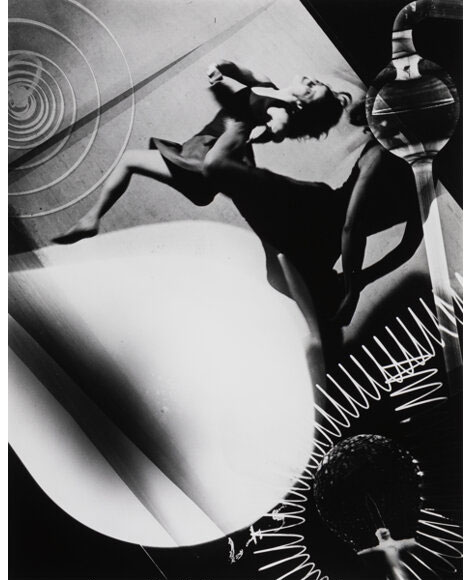|
|

|
Nigel's Pick
Nigel Russell | Director, Photographs, New York
|
When I was a teenager, I had subscriptions to both Popular Photography and Modern Photography magazines. Peter Turner's bold and vibrant color photographs were often featured on the covers and left a lasting impression on me. He was a master of color photography at a time when black and white was still considered the more artistic choice. Since his photographs rarely appear at auction, he is not as well-known as he should be. Peter Turner elevated color photography to an expressive and artistic medium. His work was characterized by bold, vivid hues and carefully composed scenes that helped redefine color photography By embracing the vibrancy of color, Turner demonstrated its power to convey mood, atmosphere, and narrative, influencing generations of photographers who followed.
|
|

|
Laura's Pick
Laura Paterson | Consignment Director, Photographs, New York
|

|
According to various biographies of the extraordinary filmmaker, writer, and artist John Waters, he was not like other children. Growing up in Baltimore in the 1950s, he was obsessed by onscreen horror and gore and so began making his own silent films in the mid-'60s using weird counter-culture friends as his cast. Recognition came in 1972 with his film Pink Flamingos, starring the flamboyant drag queen Divine, where the idea of bad taste was taken to new and hilarious levels. Waters finally achieved Hollywood success in 1988 with his film Hairspray
, again starring Divine, Over the decades, Waters has cleaned up his act and has become something of an American "national treasure", producing more films, books and art, all reflective of his very personal vision. This carefully edited and cropped photograph of Waters' lips, framed by his signature pencil mustache, taken by celebrity portraitist and fashion photographer Greg Gorman, captures perfectly the filmmaker's sardonic and very individual personality.
|
|

|
Holly's Pick
Holly Sherratt | Director, Modern & Contemporary Art
|
Esther Bubley's Greyhound Bus Terminal series captures the daily realities of travel in postwar America. Of the three images in this lot, one touches me the most: an African American mother cradling her sleeping baby while her young daughter, dressed in a neatly buttoned coat and bonnet, gazes upward with wide eyes. Their formal attire reflects the dignity of Black passengers in a segregated world, where bus terminals were both places of opportunity and sites of exclusion.
Bubley took these photographs for Standard Oil (New Jersey) as part of a project on transportation, but her focus extended beyond infrastructure to the human stories within these spaces. She documented the emotions and struggles of those in transit, offering a quiet yet powerful commentary on race, class, and mobility. This photograph struck me not just for its composition but for the story it tells-the quiet strength of a mother and her children navigating a world that placed barriers in their path.
|
|

|
Toshiko's Pick
Cataloguer, Fine and Decorative Arts, New York
|

|
Barbara Morgan is best known for her vibrant photographs of modern dancers in motion in the 1930s and 40s. When she met Martha Graham in 1935, she instantly understood the importance of modern dance as an emerging art in America and decided to capture her with photography. This encounter was so intense that even an idea arose for her to publish a book immediately. Barbara was formerly a painter, starting her career as an artist and a teacher in California, and was quite an advocate of modern art aesthetics. In 1930, she moved to NYC after she married a writer and a photographer, Willard D. Morgan, who taught her how to use cameras and print in darkrooms. Experimenting in the darkroom expanded her creativity and allowed her to explore art in photography. Being friends with Lucia and
Moholy-Nagy must have had an influence too. She was fascinated by creating abstract and realistic images combined in composition using techniques such as multiple exposures, photograms, and photomontage. This photograph, Leaping in the Blender, is literally like jumping in a blender with her many passions—dancer's bodies in motion, abstract shapes in composition, shadow, and light, all mixing in a swirling image.
|
|

|
Mya's Pick
Mya Adams | Cataloguer, Fine Arts, Dallas
|
C. Yarnall Abbott's A Coryphee (a ballet's lead dancer)
presents a whimsical yet blurred depiction of a ballerina looking away. At first glance, you might mistake it for a monochromatic pastel sketch, similar to an Edgar Degas ballerina, but this is actually a photomechanical print from 1905. The two-color halftone print appears almost as if it were drawn. I enjoy works like this because they disguise two entirely different artistic processes in one presentation. Photography is much more than simply pointing a camera and pressing the shutter; there is an art to how photographers compose their images, adjust negatives, and develop their prints—whether through chemical processes in a darkroom or photomechanically. Each print can be made a thousand different ways; it's up to the photographer to decide which method to use to bring
their vision to life.
|
|

|
|
Nigel Russell
Director, Photographs,
New York
NigelR@HA.com
(212) 486-3659
|

|
|
Laura Paterson
Consignment Director,
Photographs, New York
LauraP@HA.com
(212) 486-3525
|

|
|
Holly Sherratt
Director, Modern &
Contemporary Art
HollyS@HA.com
(415) 548-5921
|
|

|
|
Toshiko Abe
Cataloguer, Fine &
Decorative Arts
New York
ToshikoA@HA.com
(212) 486-3523
|

|
|
Mya Adams
Cataloguer,
Fine Arts, Dallas
MyaA@HA.com
(214) 409-1139
|
|
|
|
|
|
|
|
|
|